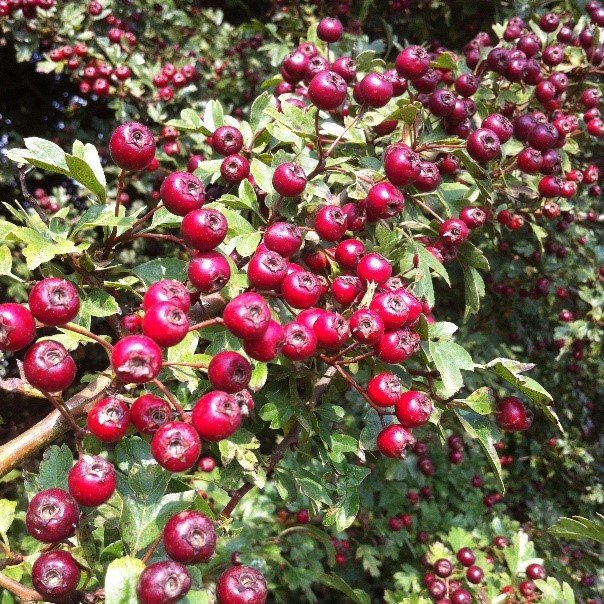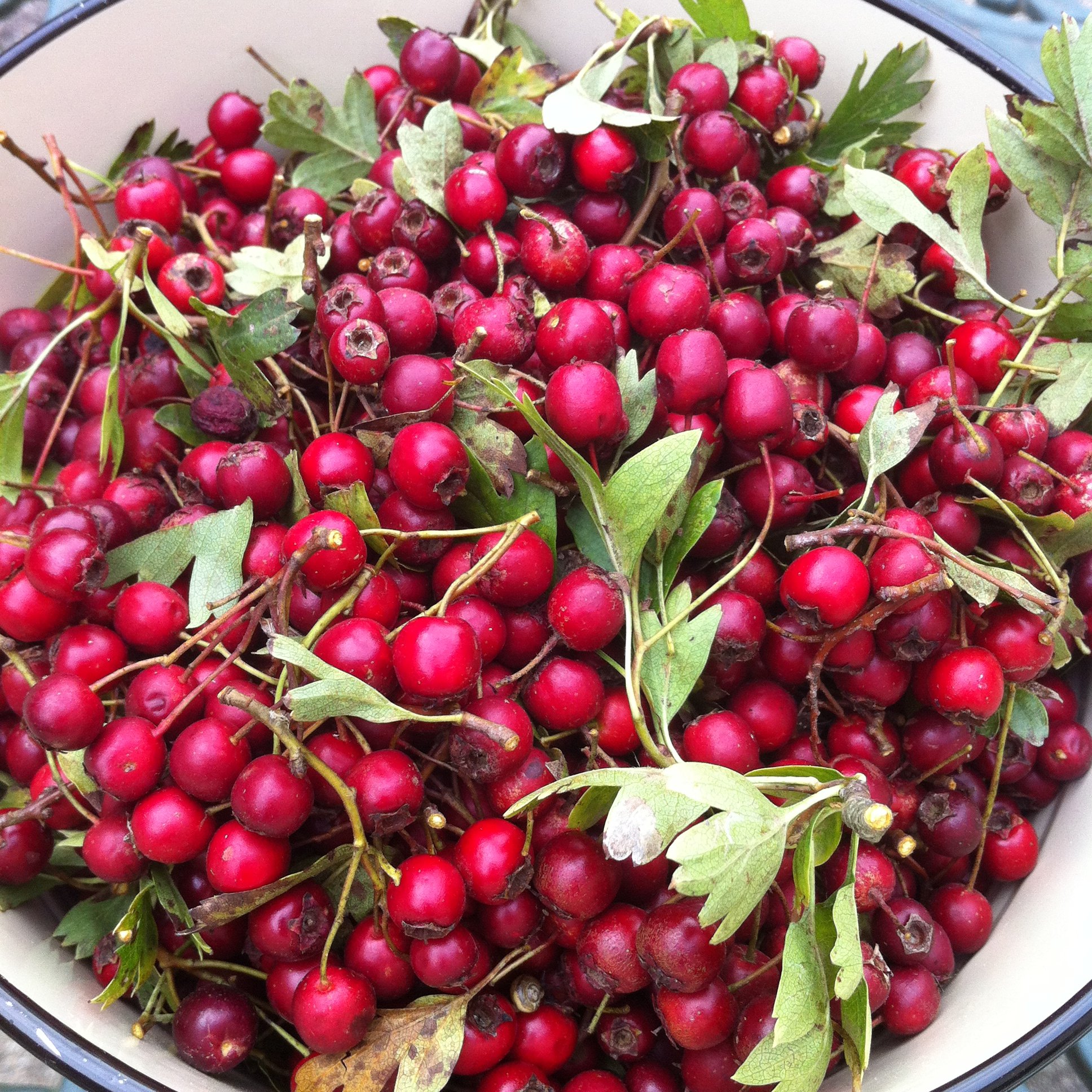The humble Hawthorn...


Walking along the hedgerow in search of rosehips, brambles and blackberries, it is easy to overlook the humble, fleshy red berries of the Hawthorn tree, known as haws, hanging around in abundance in little bunches, similar I suppose to those in Soho, but with a little more decorum and grace! The Hawthorn, (Crataegus Monogyna) gets its name from the Anglo-Saxon hagathorn, with haga meaning ‘hedge.’ The Common Hawthorn is a hardy deciduous species that is related to the rose family and is native to Europe, usually grown as hedging or a shrub, but can flourish as a tree up to around 30ft. Found the length and breadth of Britain, albeit not the extreme north-west of Scotland, the Hawthorn, again in comparison to those found in Soho, thrives and tolerates most soil conditions and the haws are tough and resilient and are capable of surviving in harsh surroundings!
Known as the ‘May’ tree in the country, the Hawthorn is covered in a prolific white blossom in the Spring and provides an excellent habitat for an abundant of wildlife species. The flowers in Spring produce nectar for insects, especially moths and the aptly named Hawthorn Shield Bug, and its berries during the Autumn provide a near endless supply of food for small mammals and birds, particularly the Redwing and the Wood Mouse. Its not only the local wildlife that the Hawthorn provides a source of refreshment for, as there are also many uses for the leaves and berries that us humans can discover.
Inspired recently by Christina Stapley on her A-Z of Medicinal Trees course, at the Weald and Downland Museum, I have also learnt the inherent uses of our native trees. The Hawthorn’s small ovate, lobed leaves can be used as a refreshing and beneficial tea and are best picked just before the tree blossoms in Spring, when they contain the highest concentrations of flavonoids – powerful compounds that contain antioxidant properties. The leaves can be dried and then used as you would use normal tea leaves. Known for its excellent cardio tonic, the hawthorn leaf is attributed to a good, healthy heart and can aid in the relief of pressure and tension to the chest and heart. The flavonoids are said to assist in the dilation and opening up of the blood vessels, allowing the oxygen-rich blood to enter the heart. Being a good regulator of blood pressure, hawthorn also aids circulation and reduces cholesterol and is thought to be really beneficial during the early stages of heart disease.
The delicate bunches of berries can be harvested and used in a variety of culinary delights. The haws are rich in anthocyanidins and are thought to be of great help for arthritis and osteoporosis, as it is thought to prevent the formation of thromboxane-A2, a hormone involved in inflammatory processes. These haws can be made into ketchup, brandy, wine, a syrup to stave off a cold or even dehydrated for making into a fruit leather. Not one to be worn on the feet though!
Steeped in folklore and beliefs, the Hawthorn is strongly linked to the giver of courage. In Pagan terms it was the symbol of fertility and was always the traditional tree used during wedding ceremonies. Thought to be the species used as ‘The Crown of Thorns’ during the Crucifixion of Christ, Hawthorn also represents The May King or Green Man, in Pagan beliefs where, during May, hawthorn blossom was worn in his leafy costume. The Hawthorn has also been known traditionally as ‘the bread and cheese’ tree, because the leaves and fruit can be eaten straight from the tree and apparently, when eaten together, they reduce any hunger pangs you may have had! Nothing quite like an actual cheese ‘n’ pickle sandwich though, is there?

So when next out walking and foraging, don’t forget to keep an eye out for the not so humble Hawthorn.
Now I’m off to make my syrup in readiness for the Winter…
All Hale! to the humble Hawthorn…




